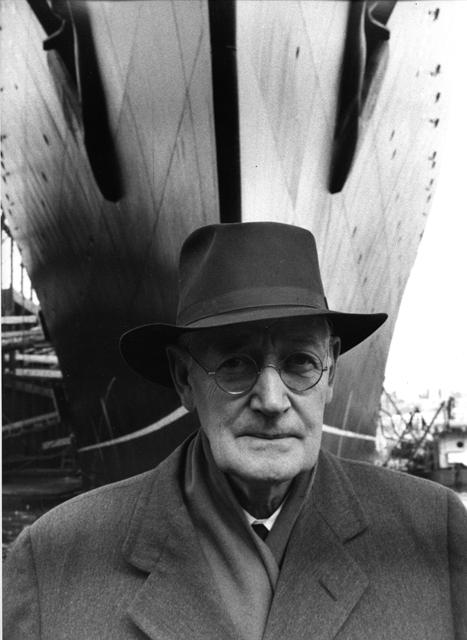Hello everyone, and welcome back to the Library blog. The Daily Press just printed an article by Michael Welles Shapiro reviewing the new book by Steven Ujifusa, “A Man and his Ship: America’s Greatest Naval Architect and his Quest to Build the SS United States.” The book explores the tenacity displayed by SS United States chief designer William Francis Gibbs in his efforts to get the ships he designed built over the years, with great emphasis given to the SS United States. In order to highlight Gibbs’ determination Ujifusa covers an incident early in his career, when a great deal of friction erupted between Gibbs and the shipyard president Homer Ferguson over the redesign of a ship called the Leviathan after World War I.

Ferguson made a below-cost bid on the shipbuilding rights to the ship and wanted to make up his deficit by charging money for a boatload of design changes to the ship specifications. Gibbs would have none of that – he designed the Leviathan with a specific set of specifications and refused to allow any alterations to her blueprints that would increase her cost. Ferguson ended up getting in trouble for losing money on the Leviathan, but his resignation was not accepted. As for Gibbs, his determination in getting his ships built paid off for him when he designed the SS United States.

The article is well written and interesting, but it sadly omits mention of The Mariners’ Museums influence on the subject matter. Shapiro frequently mentions researcher Steven Ujifusa’s new biography on Gibbs in his article, but what he leaves unmentioned is that Ujifusa did most of his research for the biography right here at The Mariners’ Museum. In fact, one of Ujifusa’s most frequently consulted sources was explored in a previous blog post that you can revisit HERE. In addition to Ujifusa’s research, however, there exists a second unmentioned tie to The Mariners’ Museum: Homer Ferguson.

Apart from being a determined shipyard president who clashed with SS United States designer Gibbs, Ferguson was also one of the co-founders of The Mariners’ Museum. This makes his involvement with the SS United States rather complicated. In life he tried as hard as he could to turn a profit for the shipyard by changing the designs of ships like the SS United States, which could have prevented the noble ship from sailing into the history books as the world’s fastest transatlantic liner had he been around when Gibbs designed her. On the other hand, his contribution to the foundation and continuation of The Mariners’ Museum has helped preserve the memory of the SS United States and many other ocean liners as well. I wonder what his thoughts would be if he could see us now… would he begrudge our praise of his nemesis’ brainchild, or would he be proud of our continuing dedication to maritime history?